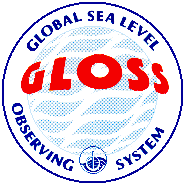Dataset Collection
Global Sea Level Observing System (GLOSS) Project: Marine Observations
Abstract
The Global Sea Level Observing System (GLOSS) is an international programme co-ordinated by the Intergovernmental Oceanographic Commission (IOC) for the establishment of high quality global and regional sea level networks for application to climate, oceanographic and coastal sea level research. The programme became known as GLOSS as it provides data for deriving the "Global Level Of the Sea Surface"; a smooth level after averaging out waves, tides and short-period meteorological events. The main component of GLOSS is the Global Core Network (GCN) of 308 sea level stations around the world, which are maintained by 87 countries. The GLOSS network has been designed to observe large-scale sea level variations of global implications, and stations were identified at intervals of approximately 1000 km along the continental coasts and on islands, but generally not closer than 500 km. In selecting individual sites, priority is given to gauges which have been functioning for a long period. All gauges are required to aim for an accuracy of 10 mm in level, and 1 minute in time. All must be linked to bench marks against which their datum is checked regularly.
This network monitors sea level changes which could be indicative of global warming, ocean circulation patterns, climate variability, etc., and contributes data to global climate research within the World Climate Research Programme (WCRP) including the Tropical Ocean-Global Atmosphere (TOGA) project, the World Ocean Circulation Experiment (WOCE), Climate Variability and Predictability (CLIVAR) and recent vertical crustal movement studies conducted by the International Union of Geodesy and Geophysics (IUGG) of the International Council of Scientific Unions (ICSU) and UNESCO (International Geological Correlation Programme (IGCP)). It also provides high quality data for practical applications of national importance. The measurements by GLOSS gauges complement satellite altimetry measurements. GLOSS is considered as an important potential element of the Global Ocean Observing System (GOOS) initiated by IOC with the World Meteorological Organisation (WMO), the UN Environmental Programme (UNEP) and ICSU.
The elements of GLOSS are:
A global network of permanent sea level stations to obtain standardised sea level observations; this forms the primary network to which regional and national sea level networks can be related;
Data collection for international exchange with unified formats and standard procedures which includes both near-real-time as well as delayed mode data collection;
Data analysis and product preparation for scientific and/or practical applications;
Assistance and training for establishing and maintaining sea level stations as part of GLOSS and improving national sea level networks;
A selected set of GLOSS tide-gauge bench marks accurately connected to a global geodetic reference system (i.e. the conventional terrestrial frame established by the International Earth Rotation Service).
The Permanent Service for Mean Sea Level (PSMSL) collects and archives data from GLOSS stations in the form of monthly mean values, but hourly and daily values are also expected to be made available from all stations by the originators. The GLOSS network consists of 308 sea level stations, which are operated and maintained by 87 countries.
Details
| Previous Info: | No news update for this record |
|---|---|
| Previously used record identifiers: |
http://badc.nerc.ac.uk/view/badc.nerc.ac.uk__ATOM__dataent_GLOSS
|
Related Documents
| GLOSS Homepage |
| GLOSS Doc Directory |
| BADC Doc: GLOSS References |
Temporal Range
1807-01-01T00:01:15
Ongoing
Geographic Extent
90.0000° |
||
-180.0000° |
180.0000° |
|
-90.0000° |

